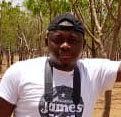
Legal recognition of the rights of local communities and Indigenous people – including nomadic herders and hunter-gatherers, who are highly vulnerable and extremely marginalized – remains “a work in progress” in Central Africa, said the authors of a new report on the state of Congo Basin forests. However, they also acknowledged that many policymakers and forest managers in the region have begun to put discussions about rights – and the need for a specific status to protect Indigenous people from threats to their cultures, ways of life, and territories – at the top of their agendas.
According to the last chapter of the report, which was produced by the Central Africa Forest Observatory (OFAC), member countries of the Central Africa Forest Commission (COMIFAC) have brought local stakeholders on board in forest management processes – thereby aligning their sub-regional and national policies with international norms and standards. In COMIFAC’s Convergence Plan, enhancing the participation of all stakeholders – especially vulnerable populations – in forest management has been set as a strategic priority.
The researchers identified several Indigenous groups in the region, including the Batwa in Burundi; the Bakola/Bagyeli, Baka, Bedzan, and Mbororo in Cameroon; the Baka in Gabon; the Baaka/Aka, Bayaka/Biaka, and Mbororo in Central African Republic (CAR); the Yaka in Congo; the Batwa, Bacwa, and Bambuti in DR Congo; and the Batwa in Rwanda.
In most countries of the sub-region, however, they said national legislation is relatively inflexible with regards to the recognition of Indigenous identity. Cameroon’s forestry legislation neither clearly defines Indigenous people nor distinguishes them from local communities. Rwanda’s legislation leans on the concept of ‘historically marginalized groups’, whilst Congo’s laws explicitly reject anteriority (being the first people to settle somewhere) as a defining characteristic of Indigenous people. There are also challenges in identifying local communities, said the researchers.
However, and despite a dearth of laws devoted to addressing the rights of Indigenous people in production and conservation forests, the governments of Central African states appear relatively keen on implementing commitments made with international financial partners on these issues. They have signed up to a number of international frameworks that provide for the protection of Indigenous people and local communities, including the Convention on Biological Diversity, the African Charter on Human and Peoples’ Rights, the International Covenant on Civil and Political Rights, and the United Nations Declaration on the Rights of Indigenous Peoples, which has been adopted by all African countries. However, no COMIFAC member states except for the Central African Republic (CAR) have ratified the International Labor Organization (ILO)’s Indigenous and Tribal Peoples Convention (ILO Convention No. 169), because it carries a domestically divisive self-determination clause.
In managing the forests of Central Africa, key stakeholders have been conscious of the need to fulfil the aspirations of local communities and Indigenous peoples and have therefore put in place mechanisms to redistribute proceeds from forest activities. Logging, which is second only to the oil sector in terms of contribution to the region’s GDP, has been a major source of paid employment for people in rural areas bordering logging concessions. Besides formal timber exploitation, artisanal logging – which has been booming lately – is also a significant source of livelihoods, creating an estimated 40,000 jobs in Cameroon, 3,000 in Orientale Province in DR Congo, and 2,000 in Congo.
The researchers also examined two innovative funding mechanisms – forestry licencing fees and local development funds – to redistribute a share of revenues derived from industrial logging and give back to the community. First institutionalized in the 1990s by the private sector and later adopted by Gabon, DR Congo, and Congo, local development funds entail sharing the proceeds of forestry operations with communities whose borders lie, at least in part, within the concession area. The money from these schemes – which can be substantial – helps to reduce rural poverty and drive infrastructure development.
Samuel Assembe-Mvondo of the Research Institute for Humanity and Nature – a contributor to the report – said that there is a need to improve data and knowledge on both the socioeconomic and environmental impacts of the legal provisions on protected areas in Central Africa, because the inclusion of Indigenous peoples in forestry and conservation policies can no longer be overlooked. “Legal instruments have, among other things, laid down participation, the consideration of usage rights, benefit-sharing and free, prior and informed consent as fundamental requirements for the responsible management of natural resources,” he said.
We want you to share Forests News content, which is licensed under Creative Commons Attribution-NonCommercial-ShareAlike 4.0 International (CC BY-NC-SA 4.0). This means you are free to redistribute our material for non-commercial purposes. All we ask is that you give Forests News appropriate credit and link to the original Forests News content, indicate if changes were made, and distribute your contributions under the same Creative Commons license. You must notify Forests News if you repost, reprint or reuse our materials by contacting forestsnews@cifor-icraf.org.












